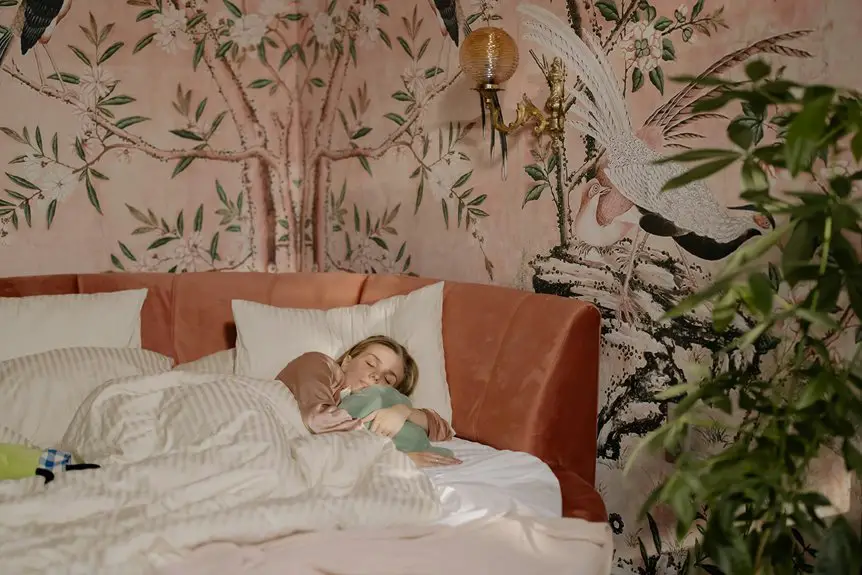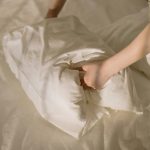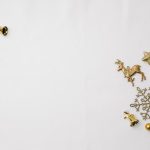To measure fabric for a pillowcase the right way, start by measuring your pillow’s length and width while it lies flat and smooth. Add about ½ inch seam allowance around all sides and an extra 1 to 1½ inches for the opening hem. Remember to take into account your pillow type—standard, queen, or king—and any added fabric for flaps or embellishments. Taking these steps guarantees a perfect fit. Keep going to discover tips for fabric patterns and cutting.
Table of Contents
Key Takeaways
- Measure the pillow’s length and width flat at its widest points for accurate fabric sizing.
- Add 1 to 2 inches for seam allowances and ease of fit around all sides.
- Include an extra 1 to 1½ inches for the hem margin on the opening side of the pillowcase.
- Use a flexible measuring tape and work on a flat, clean surface for precise measurements.
- Double-check all measurements before cutting fabric to ensure proper fit and avoid errors.
Understanding Standard Pillow Sizes
When measuring fabric for a pillowcase, you first need to understand standard pillow sizes. Most common pillows come in three sizes: standard, queen, and king. A standard pillow typically measures 20 by 26 inches, queen pillows are about 20 by 30 inches, and king pillows reach 20 by 36 inches.
Knowing this, you can decide which size your pillowcase should fit. Keep in mind, pillow dimensions can vary slightly between brands, so measuring your actual pillow is always a smart move.
Once you know the pillow size, you can calculate the fabric needed, including extra for seams and hems. This understanding helps you avoid wasting fabric and guarantees a snug, well-fitting pillowcase every time.
Gathering Your Measuring Tools
Now that you know the pillow size you’re working with, it’s time to gather the tools that will help you measure your fabric accurately.
First, grab a flexible measuring tape—it’s perfect for wrapping around curves and edges. You’ll also want a clear ruler or a yardstick for straight measurements.
A fabric marker or chalk will come in handy to mark your measurements without damaging the material. Don’t forget sharp scissors to cut the fabric cleanly once measured.
Having a flat, clean surface like a large table will make measuring easier and more precise. Finally, keep a notebook and pen nearby to jot down measurements as you go, so you don’t lose track.
With these tools ready, you’ll be set for precise fabric measuring.
Measuring the Pillow Dimensions Accurately
Start by measuring the length of your pillow from one end to the other.
Next, measure the width across the pillow at its widest point.
Getting these two dimensions right guarantees your pillowcase will fit perfectly.
Measuring Pillow Length
Measuring the length of your pillow accurately guarantees a well-fitting pillowcase that looks neat and feels comfortable.
To get it right, follow these steps carefully:
- Lay your pillow flat on a smooth surface, ensuring no wrinkles or folds affect the measurement.
- Use a flexible measuring tape and measure from one end of the pillow to the other, keeping the tape straight along the longest edge.
- Note the measurement precisely in inches or centimeters, depending on your preference, and add about 1 to 2 inches (2.5 to 5 cm) to allow for seams and ease of fit.
Measuring Pillow Width
After determining the length, you’ll want to accurately measure the width of your pillow to confirm the pillowcase fits perfectly all around.
Lay your pillow flat on a surface and use a measuring tape to get the exact width from one edge to the other. Make sure the pillow is fluffed up as it would be during use to avoid underestimating the size. Note this measurement carefully.
Remember to add extra fabric allowance for seams and ease—typically 1 to 2 inches—so the pillowcase isn’t too tight. Double-check your measurement before cutting your fabric to prevent mistakes.
Precise width measurement confirms your pillowcase will look neat and feel comfortable without being too loose or restrictive.
Adding Seam Allowances and Hem Margins
When you add seam allowances and hem margins, you guarantee your pillowcase fits perfectly and holds together well.
These extra fabric edges give you room to sew without shrinking the final size. Here’s how to handle them:
- Seam Allowance: Add about ½ inch around all sides of your fabric pieces. This gives you space to stitch the pillowcase edges securely.
- Hem Margin: Include an extra 1 to 1½ inches on the opening side for hemming. This creates a clean, durable edge.
- Double-Check Measurements: Always measure twice after adding allowances to avoid cutting errors.
Calculating Fabric Requirements for Different Pillow Styles
Choosing the right amount of fabric depends on the pillow style you want to create. For a standard envelope pillowcase, measure your pillow’s width and length, then add seam allowances and extra fabric for the envelope flap.
If you’re making a boxed pillow, remember to include the depth of the pillow when calculating fabric; add twice the depth plus seam allowances to both width and length.
For a decorative pillow with ruffles or flanges, factor in extra fabric for those embellishments. Always add a bit more fabric to account for shrinkage or errors.
Considering Fabric Patterns and Direction
When measuring fabric, you’ll want to pay close attention to how the pattern aligns to keep your pillowcase looking sharp.
Make sure the fabric grain runs correctly to avoid stretching or distortion after sewing. Taking these details into account helps your finished pillowcase maintain both its design and shape.
Aligning Patterns Properly
How do you guarantee your fabric patterns line up perfectly on your pillowcase? Start by carefully examining the pattern repeat—the distance between identical points in the design. This helps you plan where each piece should be cut.
Next, lay your fabric flat and smooth to avoid distortions that can misalign patterns. Finally, when cutting, align your fabric pieces so the patterns match at the seams, ensuring a seamless look.
Here’s how you can do it:
- Identify the pattern repeat and measure precisely.
- Lay fabric on a flat surface, smoothing out wrinkles.
- Cut matching pieces side by side, aligning patterns for perfect seam continuity.
Following these steps keeps your pillowcase looking polished and professionally finished.
Fabric Grain Orientation
Aligning your fabric patterns is just one part of creating a polished pillowcase; understanding fabric grain orientation makes a big difference in how your finished product looks and feels.
The grain refers to the direction of the threads in the fabric—warp runs lengthwise, while weft goes crosswise. When you cut along the grain, your pillowcase will maintain its shape and hang properly. Cutting against the grain risks stretching or distortion, especially if the fabric has a pattern.
Always lay your fabric flat, aligning the grain parallel to the selvage edge to keep your design consistent and prevent warping. Paying close attention to grain orientation guarantees your pillowcase not only looks neat but also lasts longer and feels comfortable every time you use it.
Tips for Cutting and Preparing Your Fabric
Cutting and preparing your fabric carefully sets the foundation for a well-made pillowcase. To get started, make certain you have sharp fabric scissors or a rotary cutter for clean, precise cuts.
Next, pre-wash your fabric to prevent any shrinkage after sewing. Finally, iron the fabric flat to remove wrinkles that can distort your measurements.
Here are three essential tips to follow:
- Align the Grain: Lay your fabric on a flat surface, aligning the grain lines to guarantee your pillowcase holds its shape.
- Use a Ruler or Measuring Tape: Measure twice to avoid mistakes, marking your cut lines clearly with tailor’s chalk.
- Cut Slowly and Steadily: Take your time cutting along the marked lines for smooth edges and accurate dimensions.
Frequently Asked Questions
Can I Use Fabric Scraps to Make Smaller Pillowcases?
You can definitely use fabric scraps to make smaller pillowcases. Just measure your scraps carefully, add seam allowances, and sew them together. It’s a great way to recycle fabric and create unique, custom-sized pillowcases.
How Do I Prewash Fabric Before Measuring?
You should wash your fabric in cold water with a gentle detergent, then dry it as you plan to after sewing. This prevents shrinkage, so your measurements stay accurate and your pillowcase fits perfectly.
What Fabrics Are Best for Outdoor Pillowcases?
Did you know outdoor fabrics resist fading up to 90% better? You’ll want to choose solution-dyed acrylic or polyester for your outdoor pillowcases—they’re durable, water-resistant, and withstand sun exposure, keeping pillows fresh longer.
Can I Mix Fabrics for a Single Pillowcase?
You can definitely mix fabrics for a single pillowcase. Combining textures or patterns adds style and personality. Just make certain the fabrics have similar care requirements to keep your pillowcase looking great and lasting longer.
How to Store Leftover Fabric After Cutting?
Like a squirrel storing nuts, you should fold leftover fabric neatly, label it with size and type, and keep it in a dry, cool place. This way, you’ll have it ready for your next creative project.
- Where to Buy Sherpa Suede Fabric - July 12, 2025
- How to Draw or Illustrate the Texture of Suede Fabric - July 12, 2025
- What Is Baseball Suede Leather Fabric? - July 12, 2025







